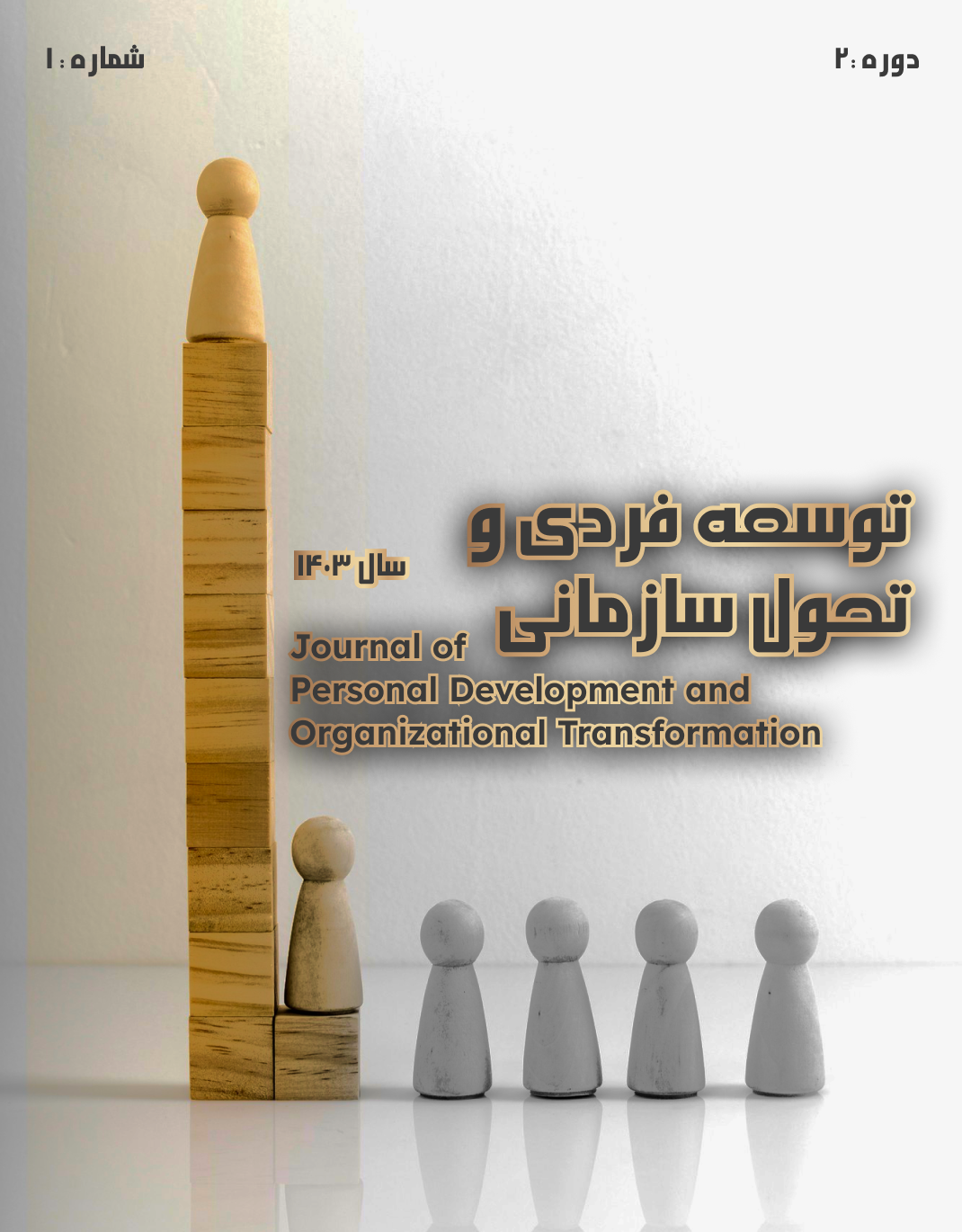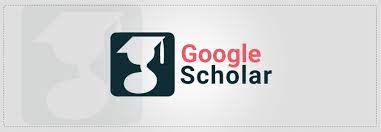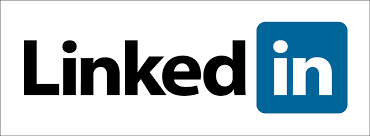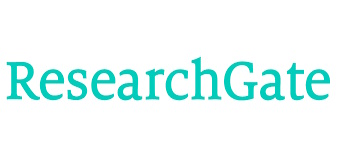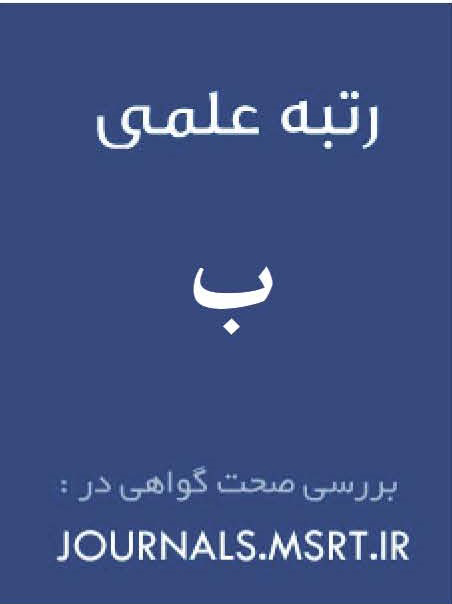Designing the Internal Relationships among the Behavioral Dimensions of Corporate Entrepreneurship within the Organizational Structure in the Public Sector: Using Interpretive Structural Modeling (ISM)
Keywords:
organizational entrepreneurship., organizational structure, public sector, interpretive structural modelingAbstract
Corporate entrepreneurial behavior within the organizational structure encompasses innovative activities, risk-taking, and proactiveness of employees, which emerge and are directed within the framework of rules, hierarchies, and the specific bureaucracy governing public sector organizations. These behaviors are generally aimed at improving services, increasing efficiency, and creating public value within existing structural constraints. The main objective of the present study is to design the internal relationships among the behavioral dimensions of corporate entrepreneurship within the organizational structure in the public sector by employing Interpretive Structural Modeling (ISM). The research method is qualitative–quantitative. In this study, using purposive sampling, 15 experts in public management and organizational behavior—recognized for their contributions to the fields of corporate entrepreneurship and organizational structure—were selected as the statistical sample. Through the ISM approach, the internal relationships among the components of the research were identified. The findings revealed that the individual criterion dimension forms the foundation of the model and influences three other variables. Bidirectional relationships were observed between the motivational criterion and the relational criterion; these two variables are positioned at the second level and affect the cultural criterion.
Downloads
References
Berenji, S., Rahmaty, M., & Kiakojouri, D. (2024). Designing a New Behavioral Model of Blockchain Technology Acceptance in Public Banks. Journal of System Management (JSM), 10(1), 225-236. https://ensani.ir/fa/article/558305/designing-a-new-behavioral-model-of-blockchain-technology-acceptance-in-public-banks
Chaubey, A., & Sahoo, C. K. (2022). The Drivers of Employee Creativity and Organizational Innovation: A Dynamic Capability View. Benchmarking: An International Journal, 29(8), 2417-2449. https://doi.org/10.1108/BIJ-06-2021-0316
Firouzyar, S., & KiaKojouri, D. (2013). Identification of Structural Restricting and Driving Factors of Development of Corporate Entrepreneurship (CE): A Case Study. Journal of Entrepreneurship and Innovation Management, 2(3), 1-16.
Guercini, S., & Ceccarelli, D. (2024). Passion Driving Entrepreneurship and Lifestyle Migration: Insights from the Lutherie of Cremona. Journal of International Entrepreneurship, 18, 373-392. https://doi.org/10.1007/s10843-020-00269-1
Hosseini Astaraei, F., Shojai, S., Saeidi, P., & Mostaghimi, M. R. (2023). Investigating the Model of Organizational Market Capabilities Based on Organizational Entrepreneurship in the Municipalities of Golestan Province. Educational Management Research, 11(43), 15-30. https://elmnet.ir/article/2206054-31042/
Kiakojouri, D. (2024a). Analysis of the Relationships Among Organizational Culture Indicators Using the DEMATEL Method at the Islamic Azad University in the West of Mazandaran Province. Journal of Dynamic Management Business Analysis, 2(4), 1-12. https://doi.org/10.61838/dmbaj.2.4.1
Kiakojouri, D. (2024b). Identifying the Dimensions and Components of the Cooperative Structure in Iran with the Approach of Waqf and Charity Affairs Based on Mixed Research. Journal of Endowment & Charity Studies, 2(1), 185-202. https://doi.org/10.22108/ecs.2024.140454.1092
Majidi, A., Mohammadi Moghadam, Y., & Ghasemi, F. (2023). The Impact of Organizational Structure on Improving the Performance of the Education Department of the Police Sciences University. Volume 6, Issue 21. https://www.noormags.ir/view/fa/articlepage/930145/
Maravilla, V. S., & Flores, G. (2025). Entrepreneurial Competency, Resilience, and Financial Literacy: Drivers of Sustainable Performance in SMEs for Societal Welfare. Jssew, 2(2). https://doi.org/10.61511/jssew.v2i2.2025.1374
Mousavi, S. M. (2025). Pathology of the Denison Organizational Culture Model in Entrepreneurial Tourism Organizations. Quarterly Journal of Education and Entrepreneurship Management, 4(7), 101-120. https://journals.razi.ac.ir/article_3779.html
Nikolov, A., & Westergren, L. (2024). Corporate Social Entrepreneurship as a New Approach to CSR - A Swedish Outlook. Lund University - School of Economics and Management. https://lup.lub.lu.se/student-papers/search/publication/8915321
Ogaard, T., Marnburg, E., & Larsen, S. (2024). Perception of Organization Structure in the Hospitality Industry: Consequences for Commitment, Job Satisfaction and Perceived Performance. Tourism Management, 29, 661-671. https://doi.org/10.1016/j.tourman.2007.07.006
Radpour, F., Farrokh Seresht, B., Kiakojouri, D., & Taghipour, H. A. (2024). Designing a Model of Effective Personality Dimensions on the Level of Managers' Communication Skills. Sociology of Education, 10(1), 21-30. https://doi.org/10.22034/ijes.2023.2006845.1435
Urooj, S., Ullah, A., Ullah, S., & Nobanee, H. (2025). Sustainable Entrepreneurship in the Digital Era: The Role of Digital Financial Capability and Anti-Money Laundering Compliance. Business Strategy & Development, 8(3), e70147. https://doi.org/10.1002/bsd2.70147
Wang, X. H. F., Fang, Y., Qureshi, I., & Janssen, O. (2023). Understanding Employee Innovative Behavior: Integrating the Social Network and Leader-Member Exchange Perspectives. Journal of Organizational Behavior, 36, 403-420. https://doi.org/10.1002/job.1994
Zare, R., Abedian Khorasani, M., Khashei, V., & Haghighi Kafash, M. (2025). Strategic Control Model Based on Digital Transformation, Technology in Entrepreneurship, and Strategic Management.
Zhu, Y. Q., Gardner, D. G., & Chen, H. G. (2023). Relationships Between Work Team Climate, Individual Motivation, and Creativity. Journal of Management, 44(5), 2094-2115. https://doi.org/10.1177/0149206316638161
Downloads
Published
Submitted
Revised
Accepted
Issue
Section
License
Copyright (c) 2024 سمیه مشایخ بخش, داود کیاکجوری, محمدجواد تقی پوریان, رمضان علیزاده (نویسنده)

This work is licensed under a Creative Commons Attribution-NonCommercial 4.0 International License.
